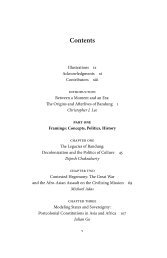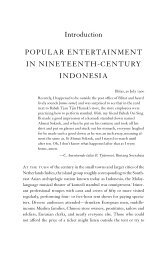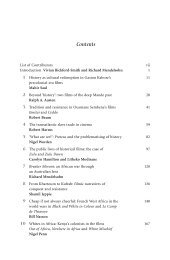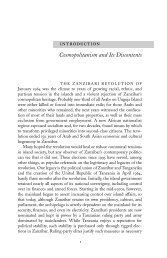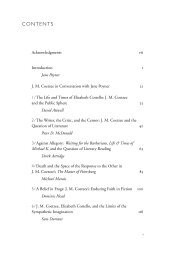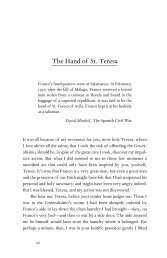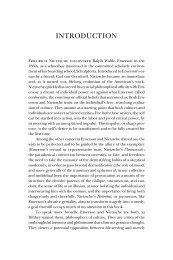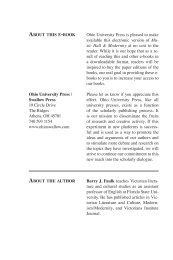Introduction
Introduction
Introduction
Create successful ePaper yourself
Turn your PDF publications into a flip-book with our unique Google optimized e-Paper software.
The growing success of Cadbury Brothers shaped William Cadbury’s<br />
“no frills” education. He attended Friends’ schools in Southport, where he<br />
sustained a chronic injury to his hip playing football, and in Hitchin, where<br />
he excelled at cricket. An early fascination with the sea was quashed by his<br />
rather austere father, who expected him to pursue a “useful career” by joining<br />
the family firm. Though an amateur musician and artist—he carried a<br />
sketchbook with him on many of his travels—William Cadbury had little<br />
time for either pursuit. At eighteen, he took a job in the engineering department<br />
at J. J. Seekings in Gloucester. In 1886, he spent eight months studying<br />
drafting and machinery at the German chocolate firm of Stollwerck<br />
in Cologne. A year later, at twenty, William joined Cadbury Brothers. He<br />
maintained the Bournville Works machinery and buildings; he hired male<br />
workers; and every six weeks from 1888 through 1892, he traveled the countryside<br />
visiting clients. 6<br />
Late in 1889, William Wilson, the brother of William Cadbury’s stepmother,<br />
Emma, visited Edgbaston. The eldest of Wilson’s children was a<br />
precocious six-year-old named Emmeline, who was the same age as William<br />
Cadbury’s half sister Beatrice. Cadbury was first charmed and then smitten,<br />
sending Emmeline small presents, writing her letters, and deciding when<br />
she was only nine that he would ask her father for permission to marry<br />
her when she turned eighteen. That he could make such a decision when<br />
he was twenty-five seems surprising now, but it was not uncommon for<br />
men of Cadbury’s class to marry late and to wed much younger women.<br />
The couple married in 1902, after Emmeline returned from six months at a<br />
finishing school in Switzerland and shortly before her eighteenth birthday.<br />
William was thirty-five. 7<br />
In 1895, using his own money, George Cadbury bought 120 acres near the<br />
factory and designed Bournville Village’s garden cottages, streets, and parks<br />
as a model working-class community. There were no restrictions on who<br />
could buy a house there, and the only thing missing was a pub, since George<br />
Cadbury hoped workers would prefer gardening to drinking. He gave the<br />
community to the self-governing Bournville Village Trust in 1900. 8<br />
The absence of a pub in the village suggests paternalism, but the company<br />
took great pains to avoid that label. Cadbury employees sat on works councils<br />
and participated in trade unions where their concerns were taken seriously. A<br />
minimum wage, sick leave, and a pension plan were among the innovations<br />
introduced at the Bournville Works. At the center of the company’s business<br />
philosophy was the belief that a laborer was not a “living tool.” Rather, as one<br />
Prologue



